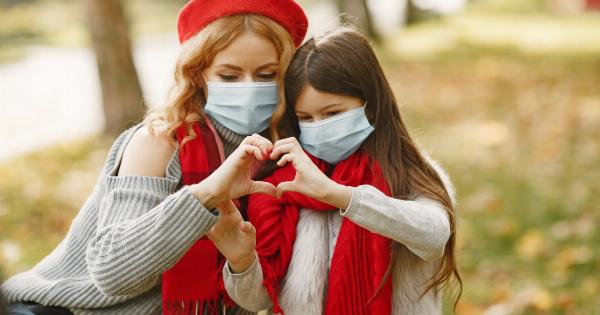When it comes to the health and well-being of our children, there is nothing more important. As parents, we do everything we can to keep them safe and protected.
However, there are certain illnesses that can pose a significant danger to our little ones, one of which is meningitis. Meningitis is a serious infection that affects the protective membranes surrounding the brain and spinal cord. In this article, we will explore the dangers of meningitis in children and discuss how to spot the signs.
Understanding Meningitis
Meningitis is primarily caused by bacteria or viruses that invade the body. In children, it is most commonly caused by viral infections, but bacterial meningitis is more severe and can be life-threatening if left untreated.
The bacteria that cause meningitis can enter the bloodstream and travel to the brain and spinal cord, leading to inflammation and potential damage.
The two most common types of bacteria that cause meningitis in children are Neisseria meningitidis and Streptococcus pneumoniae.
These bacteria can spread from person to person through respiratory droplets, such as when an infected person coughs or sneezes. It is important to note that not all children who come into contact with these bacteria will develop meningitis. Some children may carry the bacteria without any symptoms, while others may only develop mild respiratory symptoms.
The Dangers of Meningitis in Children
Meningitis can be a life-threatening condition if not promptly diagnosed and treated. The infection can cause severe damage to the brain and spinal cord, leading to long-term complications or even death.
Young children, especially infants, are more vulnerable to the dangers of meningitis due to their underdeveloped immune systems.
Some of the potential complications of meningitis in children include:.
- Septicemia: Meningitis can lead to septicemia, where the infection spreads to the bloodstream. This can cause a severe and widespread infection throughout the body.
- Brain damage: Inflammation and swelling of the brain can result in permanent brain damage. This can lead to cognitive impairments, developmental delays, or learning disabilities.
- Hearing loss: Meningitis can damage the delicate structures of the inner ear, leading to hearing loss or deafness.
- Seizures: The inflammation caused by meningitis can trigger seizures in some children.
- Hydrocephalus: Meningitis can interfere with the normal flow of cerebrospinal fluid, leading to hydrocephalus, a condition where there is an accumulation of fluid in the brain.
Spotting the Signs of Meningitis in Children
Recognizing the signs and symptoms of meningitis in children is crucial for early detection and treatment. Prompt medical attention can significantly improve the outcome and reduce the risk of complications. Here are some common signs to look out for:.
- Fever: High fever is often one of the first signs of meningitis. It may come on suddenly and persist.
- Severe headache: Children with meningitis may complain of a severe and persistent headache.
- Stiff neck: Difficulty flexing the neck forward, along with neck pain and stiffness, can indicate meningitis.
- Photophobia: Increased sensitivity to light, leading to discomfort and avoidance of bright lights.
- Seizures: Seizures can occur as a result of the inflammation in the brain.
- Changes in mental status: Children with meningitis may appear confused, irritable, or drowsy. They may have difficulty waking up or may be unusually lethargic.
- Petechial rash: Some forms of meningitis can cause a distinctive rash of small, red or purple spots on the skin.
- Difficulty feeding: Infants with meningitis may have difficulty feeding and may be unusually fussy or irritable.
- Vomiting: Nausea and vomiting are common symptoms of meningitis, particularly in younger children.
- Severe muscle pain: Children with meningitis may experience severe muscle pain, especially in the legs or joints.
When to Seek Medical Help
If your child exhibits any of the above signs or symptoms, it is essential to seek medical attention immediately. Meningitis is a medical emergency that requires prompt diagnosis and treatment.
Do not wait and see if the symptoms improve on their own, as delayed treatment can result in serious complications or even death.
When you arrive at the healthcare facility, the medical professionals will perform various tests to determine if your child has meningitis, including:.
- Physical examination: The doctor will perform a thorough physical examination, paying particular attention to the neck and nervous system.
- Lumbar puncture (spinal tap): This procedure involves collecting a sample of cerebrospinal fluid from the spinal cord for analysis to confirm the presence of infection.
- Blood tests: Blood samples will be taken to check for the presence of bacteria or viruses.
- Imaging studies: X-rays or CT scans may be conducted to evaluate the brain and spinal cord for any signs of inflammation or damage.
If the diagnosis confirms meningitis, immediate treatment will be initiated, typically including intravenous antibiotics or antiviral medications. Additional supportive measures may be necessary to manage the symptoms and prevent complications.
Prevention is Key
While meningitis can be severe, there are measures parents and caregivers can take to reduce the risk of infection.
1. Vaccination: Ensure your child receives all recommended vaccinations, including those against the bacteria that commonly cause meningitis, such as Neisseria meningitidis and Streptococcus pneumoniae.
2. Practice good hygiene: Encourage your child to wash their hands regularly and cover their mouth when coughing or sneezing. This can help prevent the spread of germs.
3. Avoid close contact with infected individuals: If someone in your household or community is diagnosed with meningitis, it is essential to minimize close contact with them to reduce the risk of transmission.
4. Keep a clean environment: Regularly clean and disinfect frequently touched surfaces, such as doorknobs, toys, and countertops.
5. Stay informed: Stay updated on the latest recommendations and guidelines for meningitis prevention. Consult with your healthcare provider to ensure your child is adequately protected.
Conclusion
Meningitis is a dangerous infection that can have severe consequences for children. Understanding the signs and symptoms is crucial for early detection and treatment. If your child exhibits any of the warning signs, seek immediate medical attention.
Remember, prevention is key – ensure your child receives all recommended vaccinations and practice good hygiene. By taking these precautions, you can help protect your child from the dangers of meningitis.



























